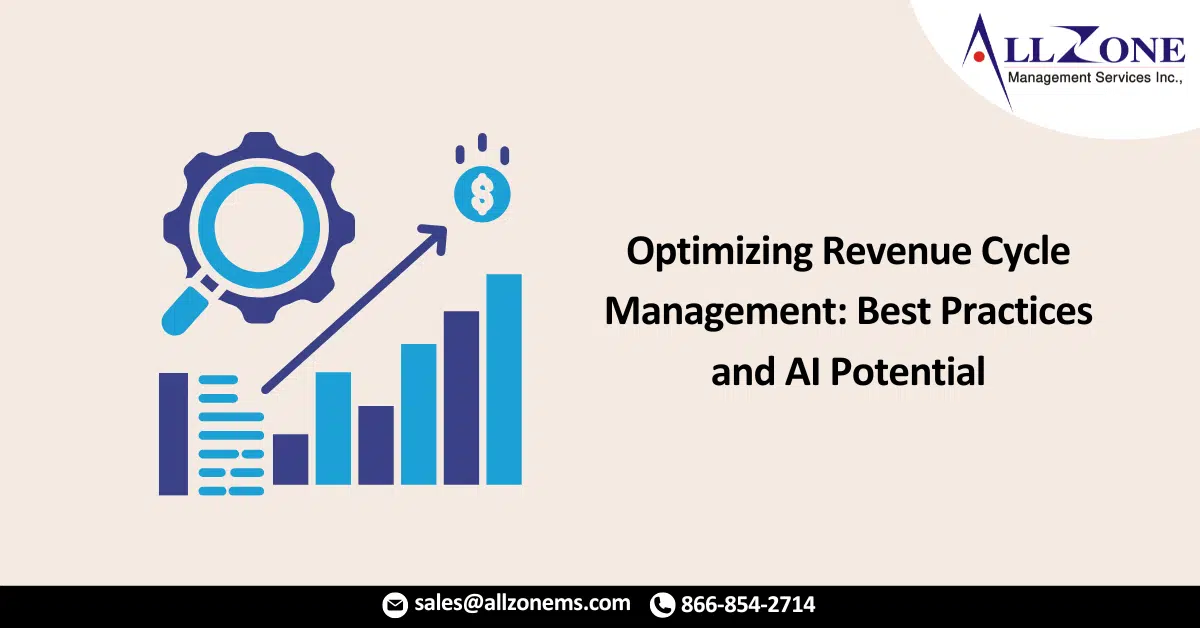From the inception to the conclusion of the Revenue Cycle Management (RCM) pipeline, it is imperative for practices to implement enhanced analytics and streamlined workflows. Healthcare providers have grappled with the challenge of receiving proper compensation for their services, and the current reimbursement landscape presents even greater obstacles compared to previous years. Payors are persistently exploring avenues to deny claims and prolong physician enrollment, while the lingering effects of the pandemic on staffing and financial resources further exacerbate the situation.
Addressing these hurdles necessitates thoughtful solutions for healthcare organizations (HCO’s), encompassing staffing shortages and technological limitations, as well as adoption issues. As organizations find themselves equipped with more comprehensive data, the focus shifts to optimizing analytics and ensuring seamless workflows throughout the RCM pipeline.
A few years ago, the primary obstacle revolved around aggregating data from diverse clinical systems. Nowadays, with many organizations operating on a unified system and database, the challenge lies in effectively leveraging this wealth of data. This entails proficiently managing available data, identifying trends, and discerning systemic issues. Moreover, organizations must cultivate a deliberate and timely approach to analysis to promptly identify cause-and-effect relationships.
In a margin-sensitive industry like healthcare, success lies in the details. For instance, refining self-pay collections can yield a notable 1-2% enhancement in overall performance. Additionally, if providers are undercharging by 10%, rectifying this deficit by a significant margin while maintaining compliance constitutes a substantial intervention.
There Is a Restricted Understanding of Physician Productivity
Predictive staffing based on historical and up-to-date data remains one of the most challenging aspects of productivity initiatives. Numerous physician practices could greatly benefit from the capacity to blend seasonal patient volume data with current patterns in order to fine-tune their staffing strategies for the following day. By merging diverse datasets like physician schedules, patient encounters, and charge distributions, they would also acquire the valuable insights required to design logical compensation structures.
Regrettably, a notable portion of organizations lacks the necessary visibility into the key metrics influencing physician productivity. This represents a crucial oversight, especially in light of the persistent financial pressures and the substantial costs associated with physician labor.
Potential Effects of Artificial Intelligence (AI)
Throughout the industry, there is a widespread optimism regarding the potential of natural language processing (NLP) and AI to introduce significant efficiencies and analytical capabilities to both the practice of medicine and the healthcare business.
This technology has the potential to liberate clinicians from repetitive, often demoralizing tasks, thereby reclaiming valuable time for direct patient care. This, in turn, not only improves the overall margin but also advances the mission of numerous organizations.
AI solutions have the capacity to impact a wide array of clinical and revenue cycle functions, including
• Eligibility, Benefits Verification, and Scheduling
• Registration and Authorization
• Treatment, Decision Support, and Transitions of Care
• Charge Capture
• Coding and Billing
• Payment and Collection
Generally, the advantages of AI in revenue cycle management (RCM) encompass enhanced timeliness, efficiency, accuracy, and the application of predictive analytics, ultimately leading to heightened satisfaction. This spans from a reduction in the need for correcting errors, to decreased intricacy and delay in staff addressing issues that still necessitate person-to-person negotiation and resolution. There is a strong rationale to anticipate that AI will contribute to streamlining operations.
The promise is there, but it has yet to be fully realized for the majority.
Recent industry studies indicate that while a small fraction of organizations presently employ AI in their RCM processes, the majority anticipate a more substantial role for AI in the future. The pace of adoption is likely to hinge on the size of the organization, with larger teams being at the forefront of this transition in the foreseeable future.
As AI’s capabilities continue to advance and its potential applications become more evident, organizations that grasp how and where to deploy it are poised to reap benefits in both operational efficiency and financial performance. Regardless of size, organizations would be wise to keep themselves well-informed about applicable use cases and involve stakeholders from their clinical, operational, and financial department’s right from the outset.

